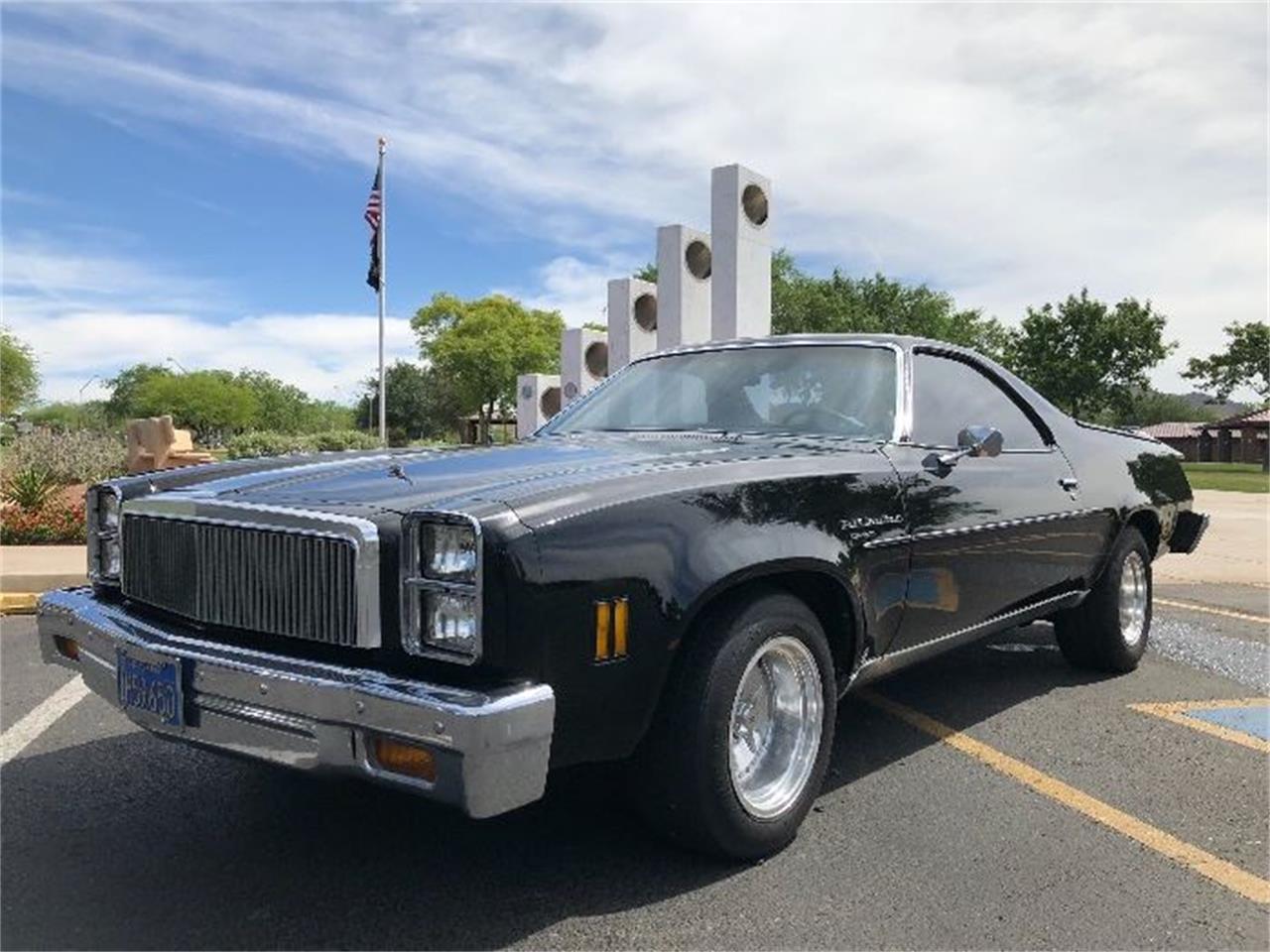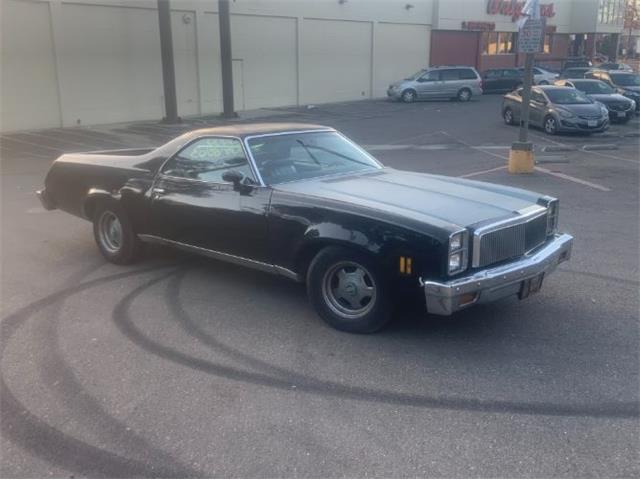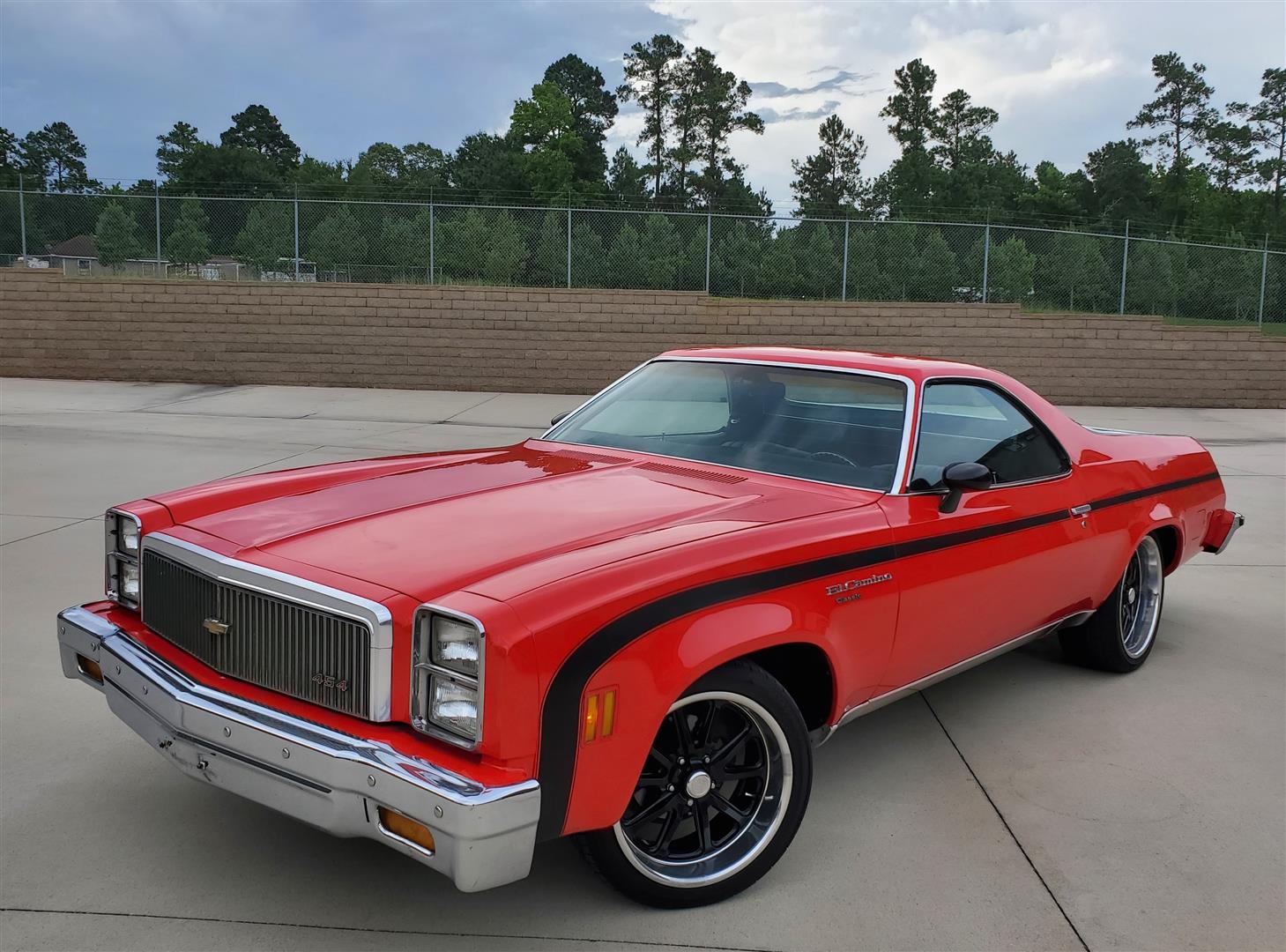

Once again sharing the body style of the Malibu, the 1978 Elky remained virtually the same until production ended in 1987. The 400 was dropped in preparation for the arrival of the downsized 1978 models. The “Colonnade” body style of 1977 featured vertical headlights on all El Caminos. In addition to the I-6, the 350s and 400cui V8, Chevy added a 140hp 305cui V8.
#1977 el camino car manual#
The 454 was no longer available, as well as the manual transmission option on V8s. The 1976 El Camino classic, sported vertical-stacked headlights, but the same base model style. Even though the V8s were still around, the top performing 454 was only capable of roughly 215hp.

Engine offerings included the base 350, a 400, and the preferred top 454.Ī new grille and another dip in performance marked the 1975 model, featuring a 105hp, 250cui Inline-6 base engine. In 1974, Chevy introduced a new grille and the El Camino Classic trim level, as seen on the 1974 Malibu Classic. This identity crisis experienced only slight tweaks during the remainder of the 1970’s, and nothing drastic enough to return the El Camino to its former glory. The once lightweight, suped-up speedster morphed into an overweight, sluggish underperformer, available as the 350 or 454cui V8. Identity CrisisĪt last, in 1973, the El Camino’s body-style, still based on the Chevelle wagon chassis, was re-imagined, creating the largest El-Camino to date. The LS6 had a one-year reign and in 1972 became available with any Chevy V8 engine, including the underwhelming 200jp 307. Short Reignīy 1971, federal and insurance regulations took the fun out of the game, and began restricting the performance of muscle cars, lowering horsepower, compression, and the El Camino’s overall suped-up identity. The 1970 LS6 454, featuring a new A-body, 454cui big-block, Chevelle front clip, and Monte Carlo front parking lights, came available in 360hp or 450hp performance levels, the highest performing El Camino to date, and thus, the stuff of legend. It wasn’t until 1968, however, that the El Camino, featuring a total body makeover, and loaded with a more powerful SS engine, took its place in the iconic lineup of American muscle cars and remained there for the remainder of the 1960s and throughout the 1970s. You never feel out of place – even the ladies should be at ease with it.” Glory Days
#1977 el camino car plus#
Good looks plus sedan styling let it be drive anywhere you’d take a regular passenger car. Hot Rod reported, “El Camino is a true multi-purpose vehicle. Transmission options included: Powerglide, Muncie manuals, a 3-speed manual and TH350/400 automatics. The drivetrain range compared to the Chevelle’s, sporting two entry-level six-cylinder engines (194cui, 230cui), a 283cui VC in 195hp and 220 hp spec, and a selection of either a 250hp or 300hp 327. They made a comeback in 1964 when Chevy introduced a new model, based off the Chevelle, a more robust body compared to the Impala, and available as a Super Sport (SS) option. Unfortunately, the first El Caminos, unlike their Ford counterparts, the Fairlanes and Rancheros, did not sell well and were officially discontinued in 1960. However, it seems it took the appearance of the Ranchero to spur Chevy to action and, in 1959, the El Camino was introduced. In fact, Chevy promoted it as, “the most beautiful thing that ever shouldered a load!” Even claiming, “It rides and handles like a convertible yet hauls and hustles like the workingest thing on wheels.” Close, But No Cigar!Įarlier, in 1952, General Motors head of Design, Harley Earl, had suggested designing a coupe pickup well before Ford released the Ranchero. Whether or not the story is true, the 1959 El Camino, a sedan-pickup truck, built on an Impala body, was Chevy’s interpretation of an Australian ute, made to look good, while doing some heavy lifting. Rumor has it, in 1932, an Australian farmer’s wife wrote to the Ford factory, requesting a vehicle that could get her to church in style on Sunday, and shuttle her husband’s livestock to market on Monday. Introduced in 1958 in response to Ford’s Ranchero, American car-truck hybrids were originally inspired by Australia’s “utes,” or “coupe utility” vehicles.

showcase vintage models like the El Camino in their showrooms, while awaiting a possible new release. Among the first hybrid vehicles in the history of the automotive industry, the Chevrolet El Camino, a combination car-truck, featured the practicality of a pickup truck, while maintaining performance car status.


 0 kommentar(er)
0 kommentar(er)
